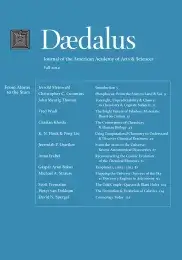Foresight, Unpredictability & Chance in Chemistry & Cognate Subjects
In numerous branches of natural philosophy, the ways in which major, transformative advances are achieved are often cloaked in mystery, or arrived at through a fortunate concatenation of circumstances. This theme is pursued here with the aid of some examples from my own work on catalysis (the speeding up of the attainment of chemical equilibria), as well as from the work of others. The emergence of the maser (forerunner of the laser), the development of positron emission tomography, and the creation of blood-glucose sensors for use by those suffering from type 2 diabetes are among the innovations adumbrated here. In addition to describing the unpredictable nature of much scientific discovery, I also describe areas in which new chemical technology will be especially beneficial to society. I foresee that openstructure solid catalysts are likely to transform many of the ways in which chemicals, now manufactured in an environmentally harmful manner, will be produced in the future. Also outlined is the vital need to understand and exploit photocatalysts so as to harness solar energy. Finally, I touch upon the absolute value of chemistry in the quest for beauty and truth.
Nearly fifty years ago, while watching Nobel laureate John Kendrew present a BBC program on the molecules of life, I was surprised to hear him remark that even expert scientists cannot usually predict what will happen in their fields more than three years in advance.1 How could it be, I wondered, that scientific giants like him could hold such a view? Do road maps used by scientists become invalid after a mere three years? As my knowledge of advances in chemistry and adjacent fields grew, however, I began to feel that Kendrew’s view is close to the truth. Before venturing into the past fortunes and future possibilities of chemistry, I will first demonstrate the veracity of Kendrew’s statement with the aid of three historical examples that underline the unpredictable nature of advances in science and technology.
In 1937, President Roosevelt asked a group of expert scientists, engineers, and businessmen for advice on what developments in science and technology could likely be expected in the future, in part so that he . . .
